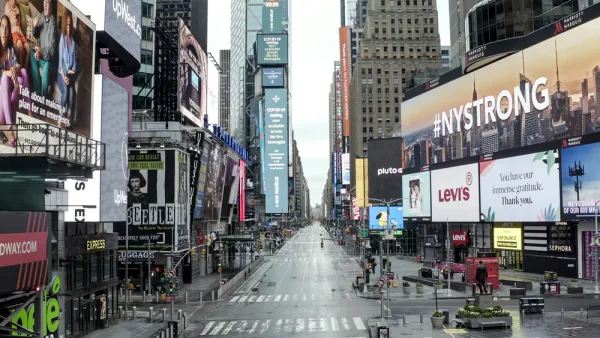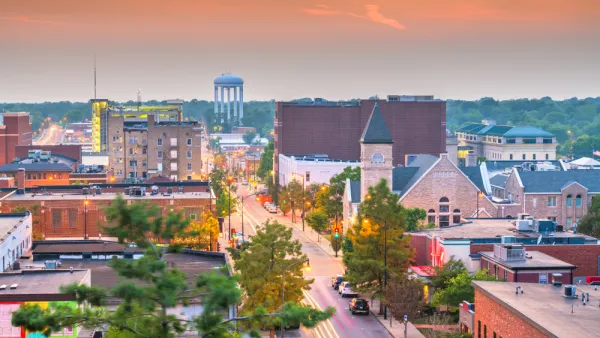For the first time in at least three decades, major metropolitan areas in the U.S. showed negative population growth during the peak of the COVID-19 pandemic.

Data from the U.S. Census Bureau shows a strong trend toward outmigration from big cities between July 2020 and July 2021, when the pandemic was at its peak. According to a piece by William H. Frey, “These shifts occurred during a year in which the nation registered its lowest population growth (0.1%) in at least 120 years, due to sharply reduced immigration from abroad and much lower levels of natural increase (the excess of births over deaths).”
The pandemic accelerated existing trends, Frey writes, pointing to more restrictive immigration laws and a decline in childbirths for many groups as factors for lower population growth nationwide. “The onset of the pandemic-accelerated growth slowdown in major metro areas led to an absolute population loss in 2020-21 among those areas combined. This is the first time the nation’s major metro areas registered an annual negative growth rate since at least 1990.”
The article expresses optimism that pandemic-era trends will reverse and population growth will return to a healthier growth rate. But it remains to be seen how the change in commuting patterns and the amenities people prioritize will impact the growth of large cities, and whether the recent popularity of small towns and suburbs with younger households will lead to a shift in the suburban form and more sustainable suburban planning.
FULL STORY: New census data shows a huge spike in movement out of big metro areas during the pandemic

National Parks Layoffs Will Cause Communities to Lose Billions
Thousands of essential park workers were laid off this week, just before the busy spring break season.

Retro-silient?: America’s First “Eco-burb,” The Woodlands Turns 50
A master-planned community north of Houston offers lessons on green infrastructure and resilient design, but falls short of its founder’s lofty affordability and walkability goals.

Delivering for America Plan Will Downgrade Mail Service in at Least 49.5 Percent of Zip Codes
Republican and Democrat lawmakers criticize the plan for its disproportionate negative impact on rural communities.

Test News Post 1
This is a summary

Test News Headline 46
Test for the image on the front page.

Balancing Bombs and Butterflies: How the National Guard Protects a Rare Species
The National Guard at Fort Indiantown Gap uses GIS technology and land management strategies to balance military training with conservation efforts, ensuring the survival of the rare eastern regal fritillary butterfly.
Urban Design for Planners 1: Software Tools
This six-course series explores essential urban design concepts using open source software and equips planners with the tools they need to participate fully in the urban design process.
Planning for Universal Design
Learn the tools for implementing Universal Design in planning regulations.
EMC Planning Group, Inc.
Planetizen
Planetizen
Mpact (formerly Rail~Volution)
Great Falls Development Authority, Inc.
HUDs Office of Policy Development and Research
NYU Wagner Graduate School of Public Service





























